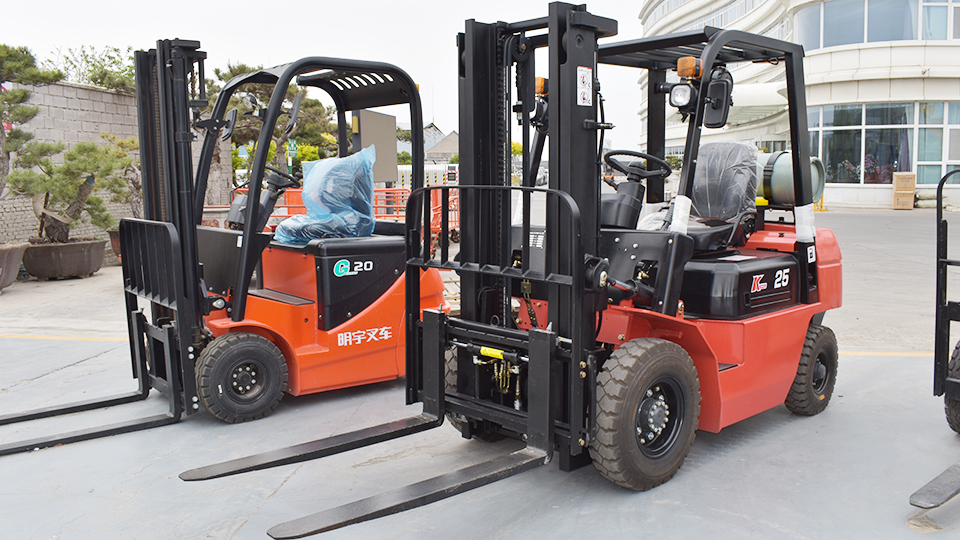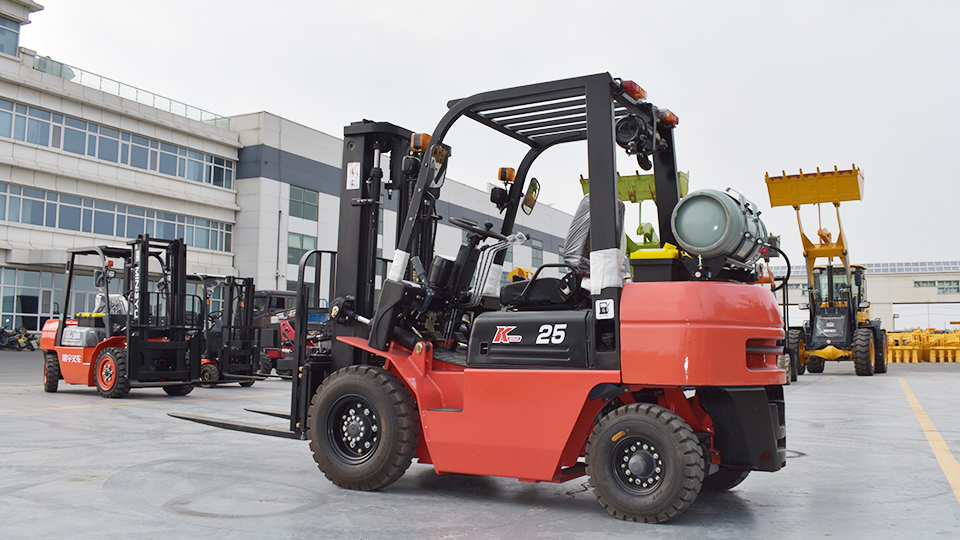
The Power and Practicality of Gas Propane Forklifts: A Technical Deep Dive
Propane-powered forklifts, often referred to as gas or LPG (Liquefied Petroleum Gas) forklifts, are a cornerstone of material handling across a vast array of industries. Their unique combination of power, versatility, and operational efficiency makes them a compelling choice over their electric and diesel counterparts. This technical article will explore the core components, performance characteristics, safety considerations, and maintenance requirements that define the use of gas propane forklifts.
1. The Mechanics of Propulsion: A Specialized Internal Combustion Engine
At the heart of a propane forklift is an internal combustion engine (ICE) specifically designed or modified to run on LPG. Unlike a standard gasoline engine, which uses liquid fuel, a propane engine processes fuel in a gaseous state. This requires a specialized fuel delivery system.
The Propane Tank: The fuel source is a portable, high-pressure steel tank, typically ranging from 20 to 33 pounds. These tanks contain propane in a liquid state under pressure. A crucial component is the pressure relief valve, a safety device designed to vent excess pressure to prevent tank rupture in high-temperature conditions.
The Fuel Line and Regulator: A fuel line connects the tank to the engine's fuel system. The most critical component in this line is the regulator or vaporizer. This device serves two primary functions:
It converts the high-pressure liquid propane into a low-pressure gaseous vapor. This phase change is an endothermic process, meaning it draws heat from the surrounding air. The regulator is often heated by the engine’s coolant to prevent it from freezing.
It precisely meters the flow of propane vapor to the carburetor or fuel injection system, ensuring the engine receives the correct air-fuel mixture for efficient combustion.
Carburation vs. Fuel Injection: Older propane forklifts often use a carburetor, a mechanical device that mixes air and propane vapor. Modern, more efficient models, particularly those designed to meet stricter emissions standards, utilize electronic fuel injection (EFI) systems. EFI provides superior control over the air-fuel ratio, leading to better fuel economy, reduced emissions, and more reliable cold starting.
2. Performance and Operational Advantages
The technical design of a propane forklift translates directly into several key operational benefits:
Sustained Power Output: Unlike electric forklifts, whose battery voltage and performance decline as the charge is depleted, a propane forklift maintains consistent power throughout the entire tank's lifespan. This makes them ideal for demanding applications, heavy lifting, and long work shifts.

Rapid Refueling and Minimal Downtime: The most significant operational advantage is the speed and simplicity of refueling. A trained operator can swap an empty propane tank for a full one in a matter of minutes. This eliminates the multi-hour downtime associated with charging an electric forklift’s battery or the logistical challenges of refueling a diesel machine. For operations running multiple shifts, this continuous operational capability is invaluable.
Versatility in Application: Propane forklifts are true multi-purpose workhorses. Their robust engine and powerful hydraulics allow them to be used effectively outdoors on various surfaces and in different weather conditions. Simultaneously, their relatively clean-burning nature and the use of catalytic converters make them suitable for indoor use in well-ventilated spaces. This dual-use capability is a key differentiator that provides operational flexibility for warehouses, manufacturing plants, and distribution centers.
Total Cost of Ownership (TCO): While the initial purchase price might be comparable to other forklift types, the TCO can be very competitive. The cost of propane fuel and the predictable maintenance schedule, combined with the machine's long service life, often make them an economically sound choice.
3. Safety, Emissions, and the Indoor-Outdoor Debate
The "gas" in "gas propane forklift" often raises questions about safety and indoor use. Here’s a technical breakdown of these critical aspects:
Propane Tank Handling and Storage: The most significant safety risk is improper handling of the pressurized propane tank. Operators must be rigorously trained on safe practices, including:
Secure Mounting: The tank must be securely fastened to the forklift to prevent it from shifting or falling.
Leak Checks: After connecting a new tank, a leak test using a special solution or soapy water is mandatory to ensure all connections are tight.
Proper Storage: Full and empty tanks must be stored upright in a designated, well-ventilated, and protected area away from heat sources and ignition points. Horizontal storage can cause the pressure relief valve to fail, creating a significant hazard.
Emissions and Indoor Ventilation: While propane burns cleaner than gasoline or diesel, its exhaust is not harmless. The primary emissions of concern are:
Carbon Monoxide (CO): An odorless, colorless, and deadly gas resulting from incomplete combustion.
Nitrogen Oxides (NOx): Pollutants that can contribute to respiratory issues.
Unburned Hydrocarbons (HC): Remnants of the fuel.
Modern propane forklifts are equipped with a three-way catalytic converter in the exhaust system. This device chemically converts these harmful gases into less toxic ones (carbon dioxide, nitrogen, and water vapor). However, this process is not 100% effective, and the catalytic converter can become less efficient over time.
Therefore, the use of propane forklifts indoors is contingent on adequate ventilation. Technical standards, such as those from the Occupational Safety and Health Administration (OSHA), require a minimum number of air changes per hour to prevent the buildup of CO and other pollutants to dangerous levels. Regular monitoring with CO detectors is a crucial safety protocol in any facility where propane forklifts are used.
4. Maintenance and Technical Troubleshooting
A regular maintenance schedule is essential to ensure the safe and efficient operation of a propane forklift.
Routine Checks: Daily pre-shift inspections are critical and should include checking the fuel system for leaks, examining the hydraulic fluid levels, and inspecting the mast, forks, and tires.
Scheduled Maintenance: Like any ICE, a propane forklift requires periodic service. This typically involves:

Engine oil and filter changes.
Spark plug inspection and replacement.
Air filter checks.
Inspection of the catalytic converter.
Checking and adjusting the drive belt and timing.
Lubricating the mast and chain components.
Inspection of the propane regulator and fuel lines for wear and tear.
Common Technical Issues:
Engine Stalling: This can often be traced back to a clogged fuel filter, a malfunctioning regulator, or an issue with the carburetor or EFI system.
Loss of Power: A weak catalytic converter, a poor air-fuel mixture, or a worn-out engine component can lead to a noticeable drop in performance.
Leaks: Propane leaks are a serious safety hazard. Any indication of a leak, such as the smell of propane, requires immediate shutdown and professional service. The O-rings and seals in the fuel system are wear items that need regular inspection.
Conclusion: The Enduring Relevance of Propane Power
The gas propane forklift is far more than just a lifting machine; it's a finely tuned piece of industrial equipment with a specific set of technical characteristics that make it uniquely suited for many applications. Its blend of sustained power, rapid refueling, and versatile indoor/outdoor capability solidifies its position as a critical asset in logistics and manufacturing. A deep understanding of its engine technology, propane safety protocols, emissions controls, and maintenance requirements is not just good practice—it is essential for ensuring a safe, efficient, and cost-effective material handling operation.
Name: selena
Mobile:+86-13176910558
Tel:+86-0535-2090977
Whatsapp:8613181602336
Email:vip@mingyuforklift.com
Add:Xiaqiu Town, Laizhou, Yantai City, Shandong Province, China